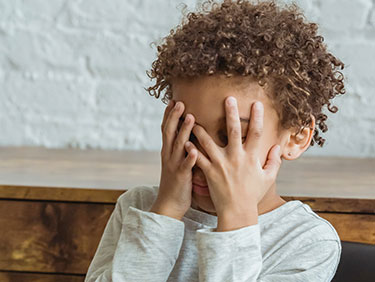About 1.4 million U.S. children and teens receive medical care for violence-related injury or exposure each year, far outpacing usual estimates, a recent study finds.
Published in May in JAMA Network Open, the study looked at data from about 8,500 children and youth ages 2 to 17 participating in the National Survey of Children Exposed to Violence studies in 2011 and 2014.
Researchers found that 3.4% of youth had a violence-related medical visit at some point in their lives and nearly 2%, or 1.4 million, had made such a visit in the past year. About one-third of those visits were among kids ages 9 and younger.
The estimate is many times higher than other counts of violence-related medical visits among youth, which are typically based on hospital emergency room visits. For example, the study pointed to the National Hospital Ambulatory Medical Care Survey, which found 340,000 youth ages 17 and younger visited an ER for violence-related injuries in a typical year between 2000 and 2008. That number is only about one-fourth of what was captured in the JAMA Network Open study, which included data on violence-related visits to other providers as well, such as pediatricians, family practice physicians and school health nurses.
According to the Centers for Disease Control and Prevention, research increasingly links adverse childhood experiences, such as experiencing or witnessing violence, to chronic health problems later in life.
“Children are the most violence-exposed segment of the population,” said study co-author David Finkelhor, PhD, director of the University of New Hampshire’s Crimes Against Children Research Center. “And their victimization is not systematically covered by a lot of our epidemiological sources, so it’s not surprising to get much larger numbers when you begin to put the pieces together.”
Finkelhor, also a professor of sociology, said exposure to violence is not measured over the full range of childhood in most epidemiological work. The National Crime Victimization Survey only surveys teens, as does CDC’s Youth Risk Behavior Surveillance System, he noted. In contrast, the National Survey of Children Exposed to Violence was the first national epidemiological survey to collect data from both teens and children via their caregivers.
In the May study, Finkelhor and colleagues found that the majority of violence-related medical visits, or 71%, were related to peer violence, 23% were for sexual assaults, and 1% were linked to parental child maltreatment. Sexual assaults by adults were the violent exposure that most often resulted in medical visits. Among all violence exposures, medical visits were less frequent than disclosures to teachers or police.
The study found that youth who experienced a violence-related medical visit in the past year also had higher levels of trauma symptoms, adverse childhood experiences and multiple violence exposures. Researchers said that the new estimates not only paint a clearer picture of the overall problem, they also reveal considerable needs among young children, noting that it is important “that studies of medical response to crime, violence and abuse recognize the full developmental spectrum of exposure.”
“I think sometimes we think it’s only teenagers who get involved in high-risk violence exposures that need medical care and that it’s tame for younger kids,” Finkelhor told The Nation’s Health. “But clearly that’s not the case.”
Researchers said the considerable number of violence-related medical visits among pre-teens highlights the need and potential of early interventions. Finkelhor said while many physicians receive training on how to recognize and deal with violence involving a guardian, they are often less prepared to deal with patients experiencing violence in the community.
There are promising violence intervention models happening inside health care settings, especially those that include social workers and other non-physicians to connect families with services, but they are not widely used outside of emergency rooms, he said. The findings also underscore the need for more mental health practitioners skilled with helping young victims of violence, he said, especially in schools.
“(This study) illustrates how severe the problem can be, but also the need for people who treat this population to be prepared with interventions that are relevant to them,” Finkelhor said.
For more information on violence and adverse childhood experiences, including a recording of a recent webinar, visit the APHA website.
Photo by Keira Burton, courtesy Pexels